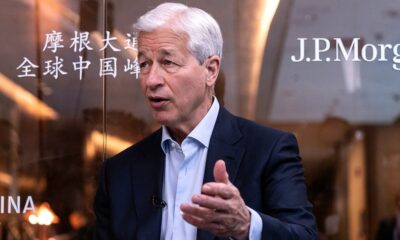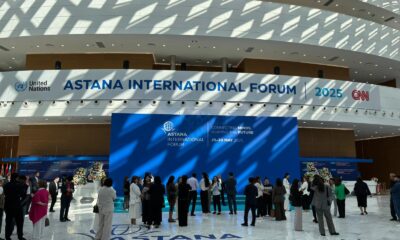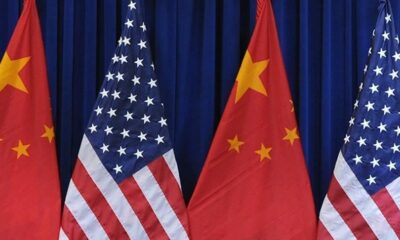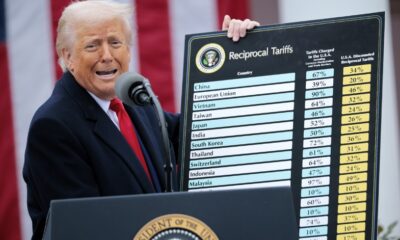Asia
China loses a third of its billionaires as economy stagnates

The number of dollar billionaires in China has dropped by a third over the past three years due to government crackdowns, economic weakness, and a stock market downturn, according to the “rich list” compiled by research group Hurun.
Hurun reported that the number of dollar billionaires, which peaked at 1,185 in 2021, has now fallen to 753—a 36% decline that outpaces the 10% drop in the value of the renminbi against the dollar during the same period.
In 2022 alone, the number of Chinese dollar billionaires fell by 16%, even as the renminbi depreciated by only 2.5% against the dollar.
The list has also seen rapid shifts, with older entrepreneurs, such as property developers, being replaced by figures like Zhang Yiming, chairman of ByteDance. The 41-year-old founder of ByteDance, which owns the popular short-video platforms TikTok and its Chinese equivalent Douyin, became China’s richest person for the first time, with a fortune of $49 billion, despite his company facing scrutiny from the U.S. government, according to Hurun.
Meanwhile, the former frontrunner, Nongfu Spring’s 70-year-old founder, saw the company’s share price fall by 40% amid accusations on social media of being “pro-Japanese.”
Entrepreneurs from Hong Kong, Macau, and Taiwan also made the list.
“The rich list has shrunk for the third consecutive year as China’s economy and stock markets face ongoing challenges,” said Rupert Hoogewerf, president of the Hurun Report.
Hurun’s wealth estimates were compiled at the end of August, not accounting for the stock market rally in September following China’s announcement of a monetary stimulus package.
The decline in ultra-wealthy individuals aligns with the collapse of China’s once-booming property market, which has eliminated many wealthy property developers.
China’s e-commerce billionaires have also been impacted by government crackdowns but have shown resilience. Pony Ma, founder of Tencent, the company behind WeChat, ranked third on the list, while Colin Huang, founder of Pinduoduo and Temu, was fourth.
Chris Xu Yangtian, founder of international clothing platform Shein, ranked 76th with a fortune of $7 billion.
Hurun noted that the new generation of Chinese entrepreneurs is more international in outlook than their predecessors.
Former top-ranked Jack Ma of Alibaba, who led the list in 2020, fell to 10th place this year after a period out of the public eye, which began after the government canceled the highly anticipated IPO of his financial group, Alipay.
Hurun also reported that 15% of the rich list members reside outside mainland China in places like Hong Kong, Macau, or Taiwan. Additionally, 30 members live in the U.S. and Singapore, with the latter becoming an increasingly popular offshore location for Chinese billionaires.
About 7% of the list’s members belong to China’s top political advisory bodies, the Chinese People’s Political Consultative Conference or the National People’s Congress.
Industries like smartphone and new energy have seen rising prominence on the list, represented by entrepreneurs such as Robin Zeng of lithium battery maker CATL, Li Zhenguo of solar panel maker Longi, Lei Jun of smartphone maker Xiaomi, and Frank Wang of drone maker DJI. These sectors have gained significantly more influence over the past decade.
Asia
OECD forecasts slower Chinese economic growth due to trade war

The Organisation for Economic Co-operation and Development (OECD) announced that the Chinese economy will grow by 4.3% next year, lowering its previous forecast by 0.1 percentage points in light of ongoing global trade conflicts.
The Paris-based group stated that “significant trade barriers” and “diminished confidence and increased policy uncertainty” are exerting downward pressure on global economic growth rates this year and next. It noted that the global slowdown trend will be most pronounced in China, Canada, Mexico, and the US.
The 38-member OECD’s outlook report this week follows US President Donald Trump’s imposition of double-digit tariff increases on imports from many countries this year. Most of the targeted countries are in Asia, with the largest increases aimed at China.
The OECD’s outlook report stated that China’s exports “will be constrained by newly implemented tariffs,” while imports will fall as production becomes increasingly localized. The report said, “Tariffs will disproportionately affect private companies, including foreign firms that are major exporters.” The US absorbed 13.5% of China’s direct merchandise exports last year.
The OECD added that China’s consumption is negatively impacted by “still-high precautionary savings due to the trauma created by the pandemic and the correction in the real estate sector,” despite support from this year’s durable goods trade-in program.
The report noted that China’s infrastructure investment is “stable,” while consumer price inflation is “low” and producer prices are trending downwards. The OECD did not change its economic growth forecast for China for this year, keeping it at 4.7%. Authorities in Beijing are targeting economic growth of “around 5%.”
Trump’s highest tariff increases, including those targeting China, have been suspended pending the conclusion of US negotiations with individual countries. However, other tariff increases, which the US leader said were implemented to address unfairness in America’s foreign trade balance, have already taken effect.
The OECD report warned that further “fragmentation” of trade, including new tariff increases and retaliatory measures, could exacerbate the growth slowdown and disrupt cross-border supply chains in large parts of the world.
OECD Secretary-General Mathias Cormann said, “The global economy has entered a more uncertain path from a period of resilient growth and falling inflation.” Inflation is expected to persist, especially where “trade costs are significantly high” or labor markets are tight.
The report projects the US economy will grow by 1.6% this year and 1.5% next year. These figures are below the 2.4% forecast for this year made in December and the 2.1% projection for 2026. According to OECD estimates, the global economy will grow by 2.9% this year and next. This is below the 3.3% forecast for both years made in December.
Song Seng Wun, an economic advisor at Singapore-based financial services company CGS, said, “On the surface, the OECD’s forecast is a reasonable one that takes into account the imposition of tariffs and retaliatory measures that could affect business confidence. This situation can affect your employment and investment decisions.”
The OECD projected that India will be the only major economy in the G20 group to record growth above 6% this year and next. Indonesia, one of the G20’s top-performing countries, is expected to grow by 4.7% this year and 4.8% next year.
Asia
Lee Jae-myung inaugurated as South Korea’s new president, vows unity and economic revival
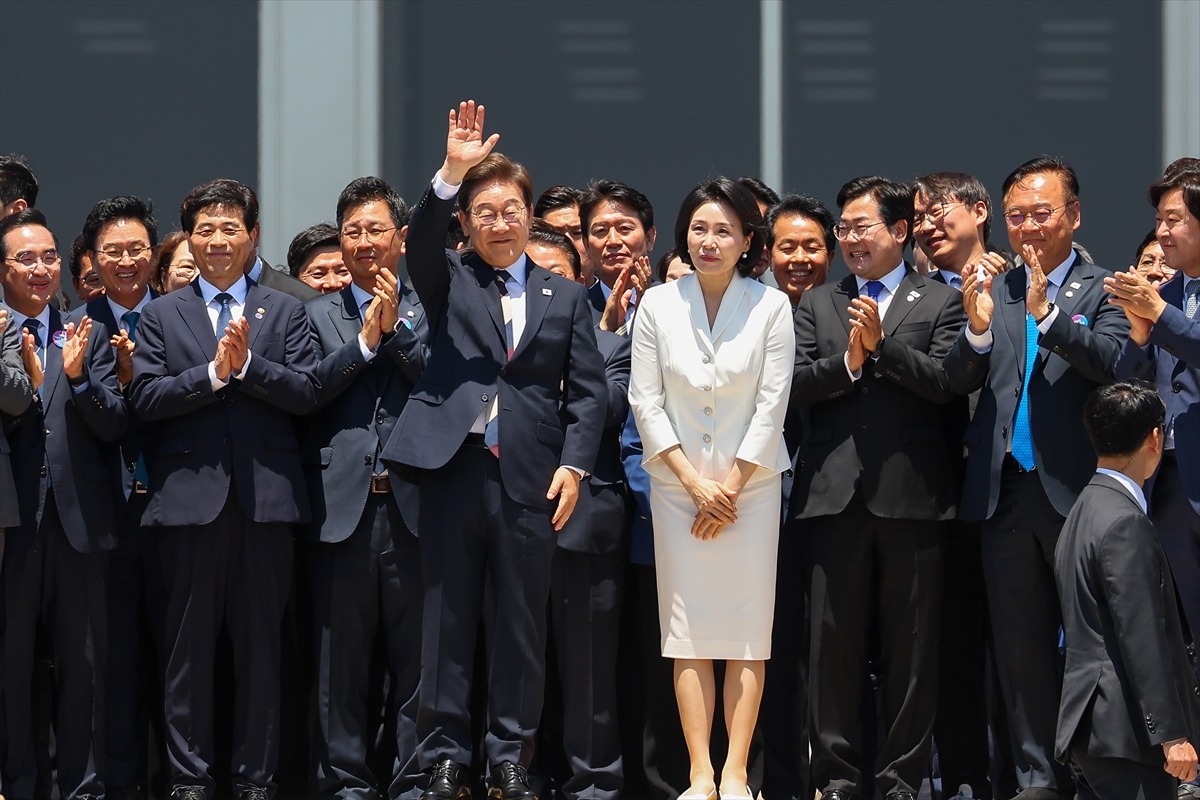
South Korea’s new President Lee Jae-myung pledged to “build a new country of hope” as he was sworn into office at the National Assembly on Wednesday, following his victory in the elections.
Lee, from the Democratic Party (DP), addressed the South Korean people in his inaugural speech in Seoul, saying, “Regardless of whom you supported in this election, I will be a president who embraces everyone and serves all citizens.”
Before the ceremony, Lee Jae-myung visited the Seoul National Cemetery to pay tribute to Korean soldiers who died in wars.
Lee, who officially began his five-year term, acknowledged that Asia’s fourth-largest economy faces an “intertwined network of crises in diplomacy, national security, and democracy.”
He promised to fundamentally change the outdated economic development model, which he blamed for fueling inequality and hindering growth. He said he would address the urgent economic problems facing the country by focusing on cost-of-living issues affecting middle- and low-income families and the struggles of small business owners.
He emphasized that they would revive growth by adopting a pragmatic and market-oriented approach to the economy and strengthen advanced technologies.
South Korea’s economy is under pressure due to Donald Trump’s aggressive trade policies and intense competition from Chinese exporters. It is also approaching the July deadline set by the White House for negotiations on import tariffs, which Washington cites as the cause of the large trade imbalance between the two countries.
Message of dialogue with North Korea
In foreign policy, Lee Jae-myung reiterated his pre-election promise to communicate with North Korea, saying, “We will keep communication channels open with the North and achieve peace on the Korean peninsula through dialogue and cooperation.”
“It is better to win without fighting than to win through conflict, and the most reliable security is peace that makes war unnecessary,” he added. However, he also pledged to respond to possible “nuclear and military provocations.”
Lee reaffirmed South Korea’s commitment to its alliance with the US, stating they would enhance trilateral cooperation involving Japan and pursue a practical and national interest-based approach in relations with neighboring countries. Lee described his conservative predecessor’s foreign policy towards China and Russia as “unnecessarily hostile.”
White House concerned
Lee is expected to pursue “pragmatic diplomacy” with Beijing while negotiating an agreement on tariffs with the US president, at a time of intensified competition between the US and China.
US Senator Marco Rubio congratulated Lee on his election victory and said the two countries “share an unwavering commitment to an alliance based on a mutual defense treaty, shared values, and deep economic ties.” He also stated that the two countries are “modernizing the alliance to meet the demands of today’s strategic environment and address new economic challenges.”
The White House stated that Lee’s election was “free and fair” but that the US is concerned about and opposes China’s interference and influence in democracies worldwide.
Early election
The country is navigating a prolonged political crisis triggered in December by then-President Yoon Suk Yeol’s brief declaration of martial law. An early election was called after Yoon was impeached by a court decision.
The National Election Commission announced this morning, following its meeting, that Lee won yesterday’s presidential election. According to official results, Lee won 49.42% of the votes, while Kim Moon-soo, the candidate of the ruling People Power Party (PPP), received 41.15%. Voter turnout reached 79.4%, the highest level in 20 years.
Lee’s victory has shifted both the presidency and control of the National Assembly from conservatives to liberal parties after several years of divided government.
The Bank of Korea last week lowered its growth forecast for this year from 1.5% to 0.8%, following a slight contraction in the economy in the first quarter due to a sharp slowdown in exports. South Korea’s benchmark Kospi stock index rose over 2.4% in morning trading. Investors anticipate that Lee will introduce governance reforms to increase the power of minority shareholders and reduce the influence of families controlling the country’s largest industrial groups.
From mayor to president
Lee, a 61-year-old former human rights lawyer, described Tuesday’s election as a “judgment day” against Yoon’s martial law and the People Power Party’s failure to stop this unfortunate move.
Lee began his political career in 2010 when he was elected Mayor of Seongnam, where he gained attention for his social welfare projects. He served as Governor of Gyeonggi Province from 2018 to 2021 and was noted for his effective measures against the COVID-19 pandemic. He narrowly lost the 2022 presidential election to Yoon Suk Yeol.
In 2024, he survived an assassination attempt and, in the same year, played an active role in the resistance against Yoon’s declaration of martial law.
Lee has also faced past accusations of making false statements during his election campaign, and legal proceedings on this matter are ongoing. However, according to the South Korean constitution, a sitting president cannot be prosecuted, so the cases have been postponed.
Lee Jae-myung’s presidency could herald significant changes for South Korea in both domestic and foreign policy.
Asia
China accuses US of severely violating trade truce
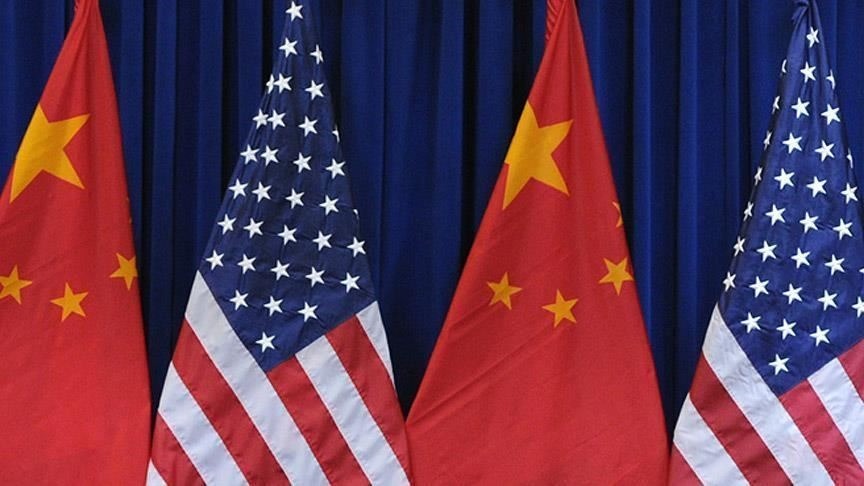
China has accused the US of “severely violating” the trade truce and vowed to take strong measures to protect its interests as tensions between the two powers reignite.
In early May, China and the US reached an agreement during talks in Geneva to temporarily reduce mutual tariffs, which had climbed as high as 145%.
US officials have grown increasingly concerned about the slowdown in China’s rare earth exports since the May 12 agreement, while President Donald Trump claimed on Friday that China had “completely violated” the deal.
However, on Monday, China’s Ministry of Commerce stated that Washington had implemented “a series of discriminatory and restrictive measures” in recent weeks. These actions, according to the ministry, undermined the Geneva consensus and harmed “China’s legitimate rights and interests.”
The ministry declared, “If the US insists on its own path and continues to harm China’s interests, China will continue to take strong and decisive measures to protect its legitimate rights.”
Among the US measures cited in the statement are warnings against the global use of Huawei chips, the suspension of chip design software sales to Chinese firms, and the cancellation of visas for Chinese students.
US officials had anticipated that the agreement reached on May 12 would lead China to lift its export restrictions on rare earth elements, which were announced in early April. However, China did not alter its export regime and continued to slow shipments to the US.
These critical minerals are extensively used in American automotive, electronics, and defense supply chains. The slowdown in exports to the US elevates the threat of work stoppages within the US manufacturing sector.
China’s Ministry of Commerce asserted, “The US has unilaterally initiated new trade frictions.” The ministry further added, “Instead of questioning its own actions, it accused China of violating the consensus.”
Trump informed reporters on Friday that he hoped to resolve the dispute in a phone call with Chinese President Xi Jinping. Trump has yet to act on this idea, which he has mentioned several times in recent months.
-

 Diplomacy2 weeks ago
Diplomacy2 weeks agoSchiller Institute conference calls for new global paradigm amid turbulence
-

 Europe2 weeks ago
Europe2 weeks agoUS boosts military presence in Northern Europe amid Russia tensions
-

 Middle East6 days ago
Middle East6 days agoLindsey Graham issues threat to Greta Thunberg and Gaza Freedom Flotilla
-

 Interview2 weeks ago
Interview2 weeks agoFormer European Parliament Türkiye Rapporteur Kati Piri spoke to Harici: EU doesn’t have a coherent strategy on Türkiye
-

 Europe2 weeks ago
Europe2 weeks agoUK eyes Kosovo for processing asylum seekers arriving by small boats
-

 Europe2 weeks ago
Europe2 weeks agoThe bank blocked the account of ex-Chancellor Schroeder due to fears of sanctions
-

 Europe2 weeks ago
Europe2 weeks ago‘National-conservative’ CPAC convenes in Budapest
-

 Europe2 weeks ago
Europe2 weeks agoGreenland warns EU and US: Invest in mining or China will


